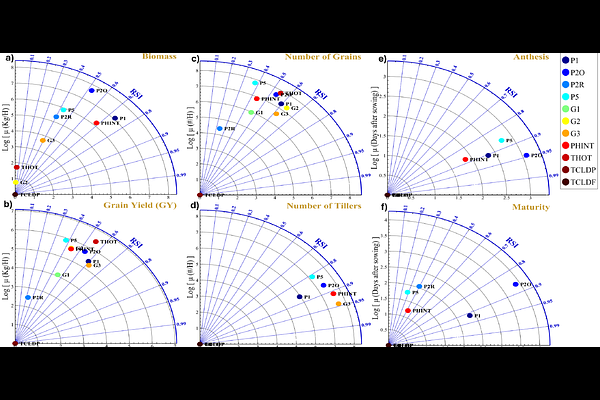Mechanistic crop modelling and AI for ideotype optimization: Crop-scale advances to enhance yield and water use efficiency

Mechanistic crop modelling and AI for ideotype optimization: Crop-scale advances to enhance yield and water use efficiency
Correa, E. S.
AbstractAdvancing our understanding and optimization of crop environment interactions is essential for enhancing food production while conserving resources. Mechanistic crop models (MCMs) simulate crop growth by integrating physiological processes such as photosynthesis, biomass allocation, and phenological development. When combined with satellite derived environmental data, these models support large scale assessment of yield potential and water use efficiency, particularly under drought-prone conditions. In this study, we evaluate the CERESRice model to define an ideotype that maximizes grain productivity while optimizing water use. A global sensitivity analysis using the Morris method identifies the most influential genetic based parameters affecting traits such as biomass accumulation, grain yield, tiller number, anthesis timing, and maturity. These parameters were then optimized using a Genetic Algorithm (GA), simulating 1,884 virtual cultivars across 5,692 runs, guided by an integrated Harvest IndexWater Use Efficiency (HI-WUE) metric. The resulting ideotype exhibits favorable traits including optimized phenological timing, and improved grain and water conversion efficiencies across four contrasting environments. To evaluate its genetic feasibility, the optimized parameter profile was compared to 21 field characterized rice cultivars (indica, japonica, and hybrids) using multidimensional similarity metrics, including Euclidean, Mahalanobis, and Cosine distances. This integrative framework demonstrates how combining MCMs with AI based optimization and genotypic comparison can guide ideotype design and accelerate cultivar improvement. The findings highlight actionable physiological traits and genetic targets for breeding climate-resilient, high efficiency rice varieties.